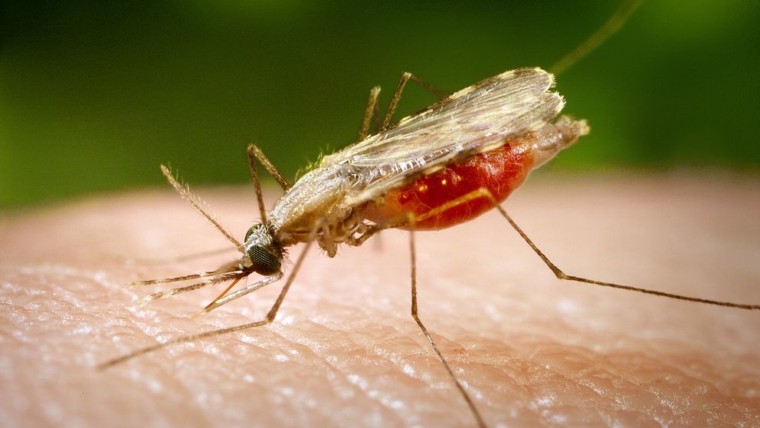Malaria is a serious and sometimes fatal disease caused by a parasite that commonly infects a certain type of mosquito which feeds on humans. People who get malaria are typically very sick with high fevers, shaking chills, and flu-like illness. Four kinds of malaria parasites infect humans: Plasmodium falciparum, P. vivax, P. ovale, and P. malariae. In addition, P. knowlesi, a type of malaria that naturally infects macaques in Southeast Asia, also infects humans, causing malaria that is transmitted from animal to human (“zoonotic” malaria). P. falciparum is the type of malaria that is most likely to result in severe infections and if not promptly treated, may lead to death. Although malaria can be a deadly disease, illness and death from malaria can usually be prevented.
About 2,000 cases of malaria are diagnosed in the United States each year. The vast majority of cases in the United States are in travelers and immigrants returning from parts of the world where malaria transmission occurs, including sub-Saharan Africa and South Asia.
Globally, the World Health Organization estimates that in 2019, 229 million clinical cases of malaria occurred, and 409,000 people died of malaria, most of them children in Africa. Because malaria causes so much illness and death, the disease is a great drain on many national economies. Since many countries with malaria are already among the poorer nations, the disease maintains a vicious cycle of disease and poverty.
Symptoms
In the early stages, malaria symptoms are sometimes similar to those of many other infections caused by bacteria, viruses, or parasites. It can start with flu-like symptoms.
Symptoms may include:
- Fever. This is the most common symptom.
- Chills.
- Headache.
- Sweats.
- Fatigue.
- Nausea and vomiting.
- Body aches.
- Generally feeling sick.
People who get infected many times may have the disease but have few or no symptoms. How bad malaria symptoms are can vary depending on your age, general health, and the kind of malaria parasite that you have.
In rare cases, malaria can lead to impaired function of the brain or spinal cord, seizures, or loss of consciousness. The most serious types of malaria infection can be deadly.
When symptoms appear
The time from the initial malaria infection until symptoms appear (incubation period) is usually 7 to 30 days. But with infections from some parasite species, signs of illness may not appear for many months after exposure. For example, you may get a fever up to a year after traveling to a country where malaria is found.
The incubation period may also be longer if you are taking medicine to prevent infection. If you have some immunity due to previous infections, your symptoms may be less severe, or you may not have any symptoms.
Symptoms may appear in cycles. The time between episodes of fever and other symptoms varies with the specific parasite infection that you have.
How is malaria treated?
· If malaria is diagnosed and treated quickly, most people will fully recover.
· Treatment of malaria depends on many factors including:
o the severity of the disease
o the species of malaria parasite? that has caused the disease (for example, Plasmodium falciparum)
o the part of the world the infection was acquired
o whether preventative antimalarial tablets were taken.
· Drugs that kill the parasite that causes malaria can be used to treat and prevent the disease. These drugs are called antimalarials:
o Sumether Plus(Artemether and Lumenfantrine 80mg/480mg
o Sumether Tablet (Artemether and Lumenfantrine 20mg/120mg





